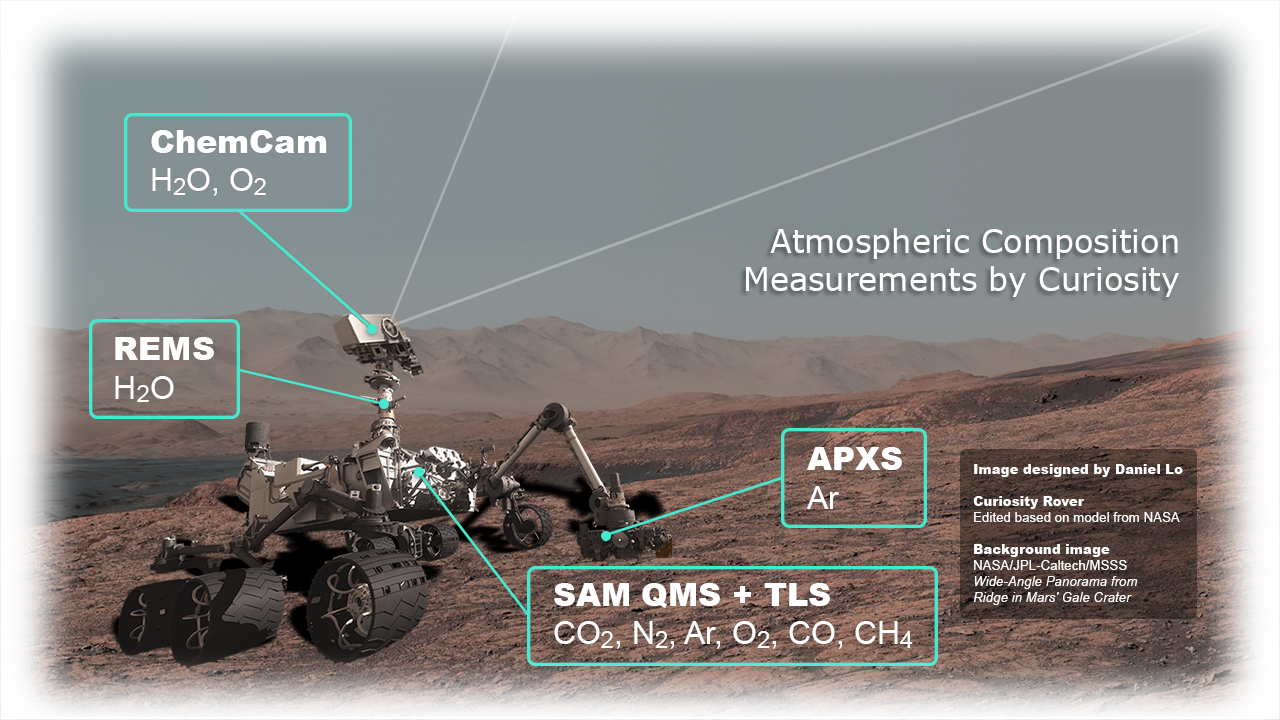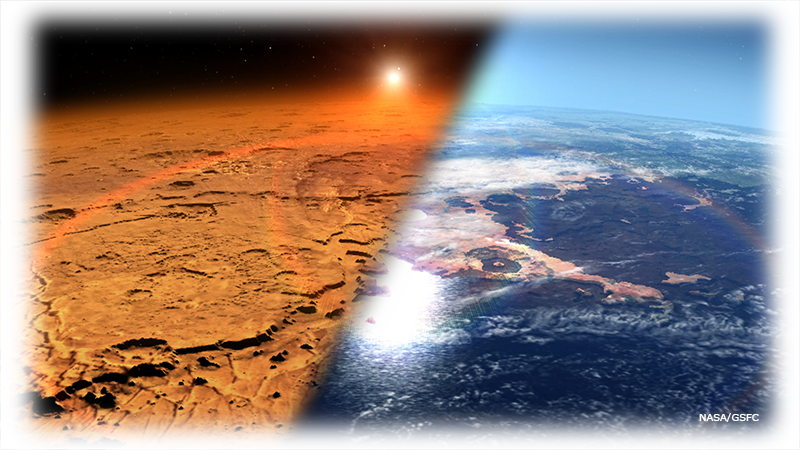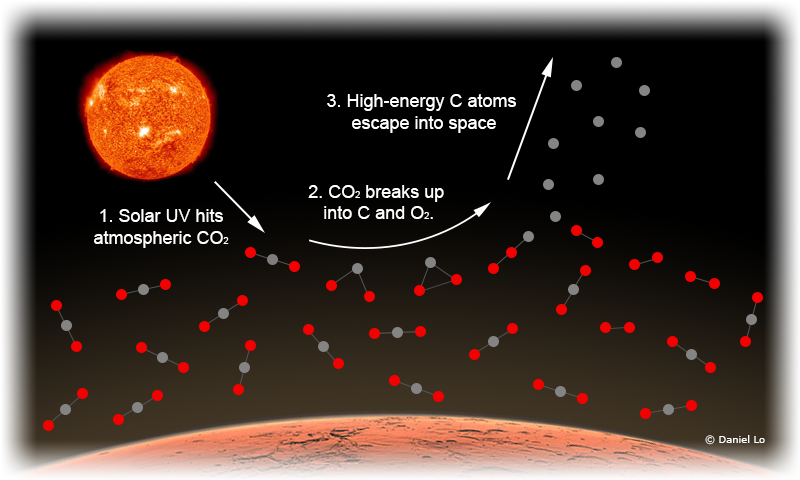1. Trace Species in the Martian Atmosphere
The Martian atmosphere is 95% carbon dioxide (CO2), with a variety of trace species making up the remainder. Although they are present in only small quantities, many of these trace species play important roles in the Martian environment. Thus, studying them would help us understand the processes that they take part in, not only in the atmosphere, but also at the surface and across the surface-atmosphere interface.

Molecular oxygen (O2) makes up only about 0.2% of the Martian atmosphere. Unlike O2 on Earth which is produced mostly from photosynthesis, O2 at Mars is produced by high-energy ultraviolet (UV) radiation from the Sun. The UV rays break up CO2 into carbon monoxide (CO) and atomic oxygen (O), and the O atoms then combine to form O2. O2 itself can be broken up by solar UV back into O, maintaining an equilibrium amount of O2 in the atmosphere. Based on models, these UV-driven processes would occur at a rate such that an O2 molecule would typically last decades in the atmosphere before being broken up. However, observations by both the Quadrupole Mass Spectrometer (QMS) and the ChemCam instruments on the Curiosity rover found that the amount of O2 can change by as much as 50% within months, pointing to a much shorter O2 lifetime of that magnitude. Preliminary results suggest a connection to water vapor in the atmosphere, but we are still gathering more data and figuring out what additional faster processes can produce and break up the O2.
Another intriguing species is methane (CH4). Methane in the Martian atmosphere has been controversial since its first detection in 2004. Today, the most extensive set of methane detections comes from the Tunable Laser Spectrometer (TLS) instrument on the Curiosity rover, indicating an increase up to 0.7 parts per billion in concentration in the middle of the Martian year. Most of these TLS measurements were made at night, and interestingly, two daytime measurements made at the supposed seasonal peak did not detect any methane. Measurements by the Trace Gas Orbiter (TGO) over the same period of time has consistently not been able to make any detections, although the measurements were higher in the atmosphere (>10 km) and made in the day. Currently, we are studying the implications behind these seemingly contradictory sets of data, and what new measurements can be made to provide more clues to this mystery.

2. Climate change at Mars
More than 3.6 billion years ago, Mars had liquid water on its surface. Just like water on Earth today, this water carved the ancient Martian landscape, forming rivers, depositing deltas and collecting in standing lakes. There were even occasional waterfalls. Water was so prevalent then that this period of Martian history is referred to as the "Noachian Period" after the biblical flood.
Modern Mars, however, is exceedingly dry. Gone are the rivers and the lakes. With an average surface temperature of -60 oC, water (H2O) on Mars now mostly exists as ice in the polar caps and the subsurface. Although the atmosphere is made up of 95% CO2, the surface pressure of 6 millibars today is too low to produce sufficient greenhouse heating. For Mars to have been warm enough in the past to support liquid water on the surface, hundreds of millibars of CO2 would have been required, and it is believed that most of this CO2 has been lost to space.

To understand the past, we must first understand the present.
My research focuses on the processes behind the loss of the Martian atmosphere. One main process is photochemical escape. CO2 is broken up into the constituent C and O atoms by solar UV radiation, and these C and O fragments can then escape into space if they have sufficient energy. Through my research, I have found the newly-discovered CO2 photodissociation into C and O2 to be a major contributor to the escape of C atoms from the Mars atmosphere today, making up as much as 60% of the total photochemical escape. However, even after including this process, the predicted amount of C in the atmosphere is significantly less than what is measured by the Imaging UltraViolet Spectrograph (IUVS) instrument on the MAVEN spacecraft. This implies that present-day escape rates are higher than what we are calculating from models, and we are currently exploring what can result in this discrepancy. These results are about atmospheric loss from modern Mars would form the foundation for extrapolating the various loss processes back in time to ancient Mars, which had a thicker and warmer atmosphere, and orbited a younger Sun that emitted more intense UV radiation.





